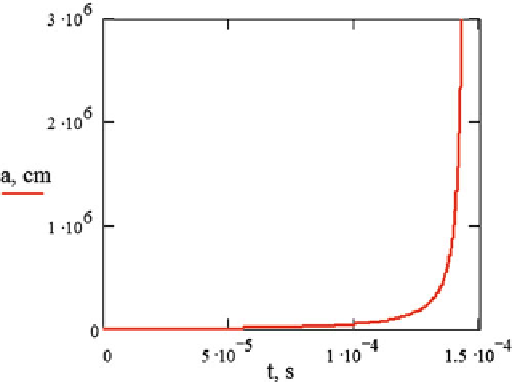Geoscience Reference
In-Depth Information
Fig. 5.25
Solution from Eq.
5.32
for the conditions of Eq.
5.35
, describing the development
dynamics of “sprites”
The small-scale heterogeneity of the electron concentration in the bottom of
the ionosphere with horizontal sizes from several hundred meters up to tens of
kilometers is formed as a result of the turbulence caused by numerous reasons
(winds, magnetosphere electric currents, gravity-acoustic waves, etc.) (Gershman
et al.
1984
).The relative intensity of small-scale electron density fluctuations at
altitudes from 80 up to 400 km is estimated by the value of about 10
-2
. Assuming
D
10
8
km=s; b
D
3 km; E=E
cr
D
1:5; a.t
D
0/
D
0:03 km; (5.35)
V
fr
we get the estimated value of the increment
10
4
s
-1
. However, with the growth
of the asperity the overcriticality
E/E
cr
at its top grows. Respectively, the increment
grows. In the nonlinear case the development is defined by Eq.
5.32
. Its solution for
the considered case, given in Fig.
5.25
, has an explosive character.
After a time of about 100 s, the slow growth is replaced by sweeping
development, and for 10 s the asperity grows to 30 km.
In real conditions, the front of the ionization still moves within the limits of
the zone of the overcritical field while the top of the asperity is already in the far
subcritical field.
There can be several such asperities, caused by ionization front instability. These
are the observed phenomena such as “sprites” (see Figs.
5.2
and
5.3
). We have to
note that the “elf ” already is extinguished because its bottom front has reached
the border of overcriticality and the electric field in it is already relaxed. But the
“sprites” brightly shine, because their growth is accompanied by the action of
the current that is taking a charge from the ionized layer of the elf to the tops of
the asperities.

